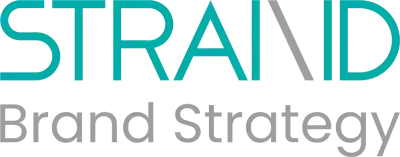Optimizing Brand Actions with the T-Suite
5 minutes | 22 Oct 2024Harness the power of the T-Suite – Time, Treasury, Talent, Tools, and Techniques – to enhance brand actions and drive successful outcomes.
In the journey to elevate your brand, successful execution of strategic actions is crucial. The T-Suite—comprising Time, Treasury, Talent, Tools, and Techniques—provides a comprehensive framework for managing and optimizing your brand actions. This article delves into how each element of the T-Suite contributes to effective brand management and how you can leverage these components to achieve your brand’s objectives.
Effective Time Management
Time management is a critical element in executing brand actions effectively. It involves planning and allocating time efficiently to ensure that all tasks and projects are completed on schedule.
Strategies for Effective Time Management
- Prioritize Tasks: Identify and prioritize tasks based on their importance and deadlines. Use tools like the Eisenhower Matrix to distinguish between urgent and important tasks.
- Create a Schedule: Develop a detailed schedule that outlines deadlines, milestones, and key deliverables. Utilize project management tools to track progress and ensure timely completion.
- Set Realistic Timelines: Establish realistic timelines for each task and project phase. Avoid overloading schedules to prevent burnout and maintain quality.
- Monitor and Adjust: Regularly review your schedule and adjust as needed based on progress and unforeseen challenges.
Examples of Time Management in Brand Actions
- Campaign Planning: Allocate specific time blocks for each phase of a marketing campaign, including planning, execution, and evaluation.
- Product Launch: Create a timeline that includes all preparatory steps, from product development to promotional activities and post-launch analysis.
Efficient Budget Management
Treasury management involves effectively managing your financial resources to support brand actions. It includes budgeting, forecasting, and controlling expenditures to ensure optimal use of funds.
Strategies for Effective Treasury Management
- Develop a Budget: Create a detailed budget for each brand action, including all anticipated costs. Ensure that the budget aligns with your overall financial plan.
- Monitor Expenses: Track expenses against the budget to identify any variances. Use financial management tools to monitor and control spending.
- Allocate Resources Wisely: Allocate budget resources based on priority and impact. Focus on high-impact activities that align with your strategic goals.
- Plan for Contingencies: Set aside funds for unexpected expenses or changes in plans. Having a contingency budget can help manage risks and maintain flexibility.
Examples of Treasury Management in Brand Actions
- Marketing Campaigns: Allocate budget for different components of a campaign, such as advertising, content creation, and influencer partnerships.
- Brand Repositioning: Budget for research, strategy development, and execution phases to ensure a successful repositioning effort.
Leveraging Human Resources
Talent management involves effectively utilizing your team’s skills and expertise to execute brand actions. It includes recruitment, development, and deployment of human resources.
Strategies for Effective Talent Management
- Identify Key Roles: Determine the key roles and responsibilities required for each brand action. Ensure you have the right talent in place to fill these roles.
- Develop Skills: Invest in training and development to enhance the skills of your team members. Provide opportunities for professional growth and continuous learning.
- Foster Collaboration: Promote a collaborative work environment where team members can share ideas and work together towards common goals.
- Evaluate Performance: Regularly assess team performance and provide feedback. Recognize and reward contributions to maintain motivation and engagement.
Examples of Talent Management in Brand Actions
- Campaign Execution: Assign specific roles for campaign management, content creation, and analytics. Ensure team members have the necessary skills and tools.
- Product Development: Utilize cross-functional teams to contribute expertise in design, marketing, and customer insights for a successful product launch.
Utilizing the Right Resources
Tools encompass the various resources and technologies that support brand actions. They help streamline processes, enhance efficiency, and provide insights.
Strategies for Effective Tool Utilization
- Select Appropriate Tools: Choose tools that align with your brand actions and objectives. Consider factors such as functionality, integration, and user-friendliness.
- Leverage Technology: Utilize technology to automate repetitive tasks, manage data, and analyze performance. Examples include CRM systems, marketing automation platforms, and project management software.
- Train Your Team: Ensure that your team is trained to use the tools effectively. Provide support and resources to maximize tool utilization.
- Evaluate and Upgrade: Regularly evaluate the effectiveness of your tools and upgrade as needed to keep pace with technological advancements and changing needs.
Examples of Tools in Brand Actions
- Marketing Automation: Use tools like HubSpot or Mailchimp to automate email marketing campaigns and track engagement metrics.
- Project Management: Utilize platforms like Asana or Trello to manage tasks, track progress, and facilitate team collaboration.
Applying Best Practices
Techniques refer to the methods and practices used to execute brand actions effectively. They involve applying best practices and proven strategies to achieve desired outcomes.
Strategies for Effective Technique Application
- Adopt Best Practices: Implement industry best practices to ensure high-quality execution of brand actions. Stay informed about the latest trends and methodologies.
- Use Data-Driven Approaches: Base your techniques on data and analytics to make informed decisions. Use insights to guide strategy and optimize performance.
- Innovate and Experiment: Encourage innovation and experimentation to find new ways to achieve goals. Be open to trying new techniques and approaches.
- Evaluate Results: Assess the effectiveness of your techniques and make adjustments based on performance data and feedback.
Examples of Techniques in Brand Actions
- A/B Testing: Use A/B testing techniques to optimize marketing materials, such as email subject lines or ad copy, for better performance.
- Customer Segmentation: Apply segmentation techniques to tailor marketing efforts and improve targeting and engagement.
The T-Suite—Time, Treasury, Talent, Tools, and Techniques—provides a comprehensive framework for optimizing brand actions. By effectively managing these elements, you can enhance the execution of your brand strategy, overcome challenges, and drive successful outcomes.
Ready to optimize your brand actions with the T-Suite? Discover how STRAND’s strategic workshops and the 5S Framework can help you master Time, Treasury, Talent, Tools, and Techniques for brand success. Contact us today to learn more and get started on your journey to becoming a leading brand.

